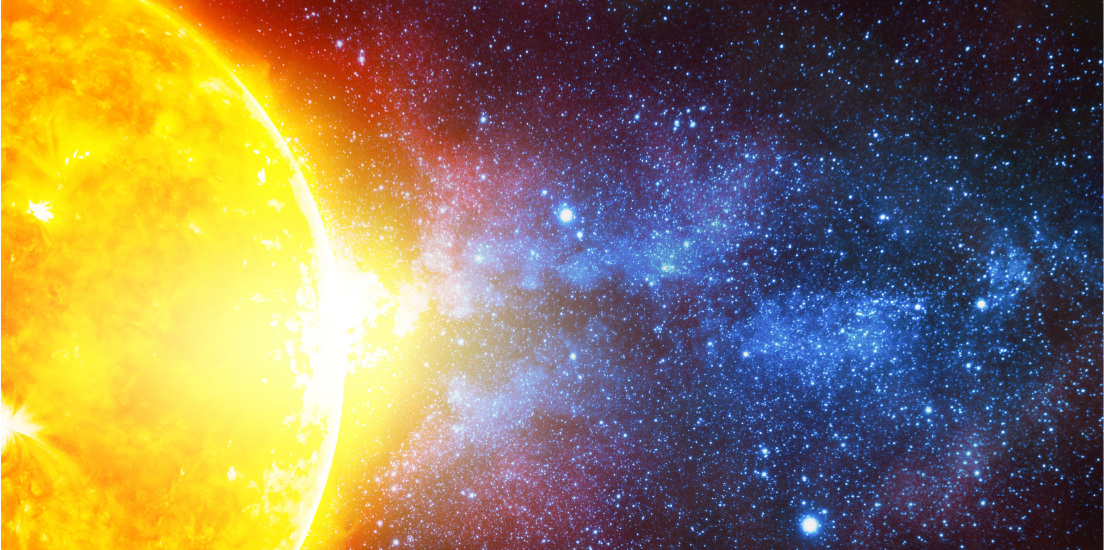The Visitor Who Came and Left the Sun Behind — The Farewell Voyage of 3I/Atlas
Estimated reading time: 8-Minute
In the vast silence between the stars, something ancient glides — unseen, unbound, and eternal.
Its name is 3I/Atlas, the third interstellar traveler ever recorded by human eyes.
It was not born of our Sun, nor does it belong to our family of planets. It is a wanderer — a messenger from another corner of the galaxy, crossing our skies for a fleeting moment, like a ghost ship drifting through unfamiliar waters.
When it was first detected, astronomers noticed something uncanny. Its path curved too openly — a course too wide for any comet tethered to the Sun.
Like ʻOumuamua and Borisov before it, Atlas bore the unmistakable signature of the beyond: an orbit that never returns.
By tracing its motion and chemical makeup, scientists believe Atlas has been traveling through the Milky Way for millions — perhaps tens of millions — of years, ejected long ago from another star system by a planetary collision or stellar birth.
Since then, it has wandered the galactic sea, sailing between suns, drifting through regions of light and cold, until fate brought it here — to us.
Hidden Behind the Sun
As of late 2025, 3I/Atlas lies concealed behind the Sun’s radiance — a distant ember swallowed by daylight.
It races onward at nearly 60 kilometers per second, faster than any human creation could follow, tracing a hyperbolic arc that will carry it forever outward.
Yet soon — around December 20–21, 2025 — it will return to view. For those watching the dusky edge of twilight skies, Atlas may appear briefly in the west, near the horizon, a dim spark against the winter air.
It will not linger.
Its visit is short — a few silent nights before it slips again into the darkness beyond.
The Moment of Passing
By early 2026, Atlas will leave the warmth of our Sun behind. It will cross the boundary of the heliosphere, the invisible bubble of solar wind that defines our Sun’s reach. Beyond that frontier lies interstellar space — a realm colder than thought and older than memory.
There, Atlas will continue its endless voyage, perhaps wandering another billion years before meeting the gravity of another star.
Between now and then, it will see no warmth, no light — only the quiet pulse of the galaxy’s background glow. Yet in that emptiness, Atlas carries a story older than any civilization we know.
What Atlas Carries
Its frozen heart is made of dust and ice forged under a foreign sun — elements that predate our Earth. Some of its atoms may be as ancient as the galaxy itself, born from the first supernovae that seeded the Milky Way with light.
When we discover such travelers, we glimpse more than rocks and gas. We see the fossils of other solar systems — the ruins of worlds that once were, fragments of dreams that survived the death of their own stars.
Each interstellar visitor reminds us that creation is not confined to one sky, or one Sun.
The Human Connection
Atlas was discovered in early 2024 by the Asteroid Terrestrial-impact Last Alert System (ATLAS) — a vigilant network of telescopes watching for celestial intruders.
When its strange, open trajectory was confirmed, astronomers realized what they were seeing: a messenger from outside the solar system, moving far too swiftly to ever return.
Since then, observatories around the world have watched its arc — tracking a journey that began before humanity existed and will outlast our species by eons.
The Watchers Beneath the Sky
This December, telescopes from Hawaii’s Mauna Kea, Chile’s Atacama Desert, the Canary Islands, and Japan’s Mount Norikura will scan the dusky horizon.
From Iceland’s Thingvellir to Mount Bromo in Java, skywatchers will stand beneath the cold heavens, hoping for a glimpse of the traveler before it fades again.
And for a brief moment, humanity will look up together — not toward a satellite or planet, but toward something that came from somewhere else.
A Farewell Between Suns
When 3I/Atlas finally slips beyond sight, it will carry our memory with it — the record of the civilization that saw it pass.
And perhaps, a million years from now, when it drifts near another sun, some distant beings will see the same faint spark and ask, as we do now:
“Who saw you before us?”
In that question lies the truth of the cosmos — that the galaxy is not a series of separate worlds, but a single, endless conversation carried by wanderers like Atlas.
The Last Light
So when you step outside this December and look up into the quiet dark, remember: even if you see nothing, it is still there — crossing our sky, silent and bright, on its journey beyond the reach of our light.
It came from another sun.
It passed through ours.
And now, it goes on — carrying our unspoken wish across the deep, endless night:
That wherever it travels, it finds another sky as enchanted as ours.
Behind the Story — The Wanderer’s Legacy
“3I” marks the third interstellar object ever discovered. The “I” stands for interstellar — a single letter that holds infinity.
Each visitor — ʻOumuamua, Borisov, and now Atlas — teaches us the same truth: our solar system is not a sealed garden. It is open to the galaxy’s great tide, and we are part of something far beyond our small blue world.
When 3I/Atlas vanishes into the dark, its story will remain — not just in data and telescopes, but in the hearts of those who looked up and, for a brief moment, understood:
The universe doesn’t end where our sight does.
It only begins there.


Share:
Orionids — The Hunter’s Trail of Light
Top 15 Global Viewing Sites for 3I/ATLAS (2025)